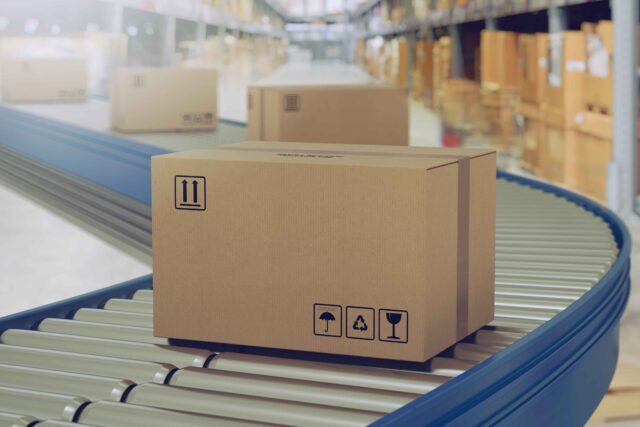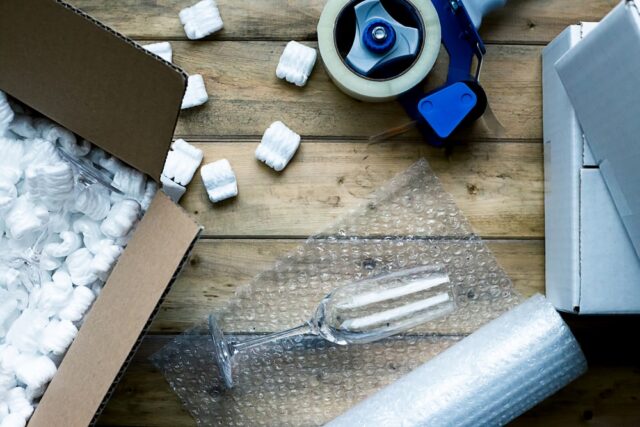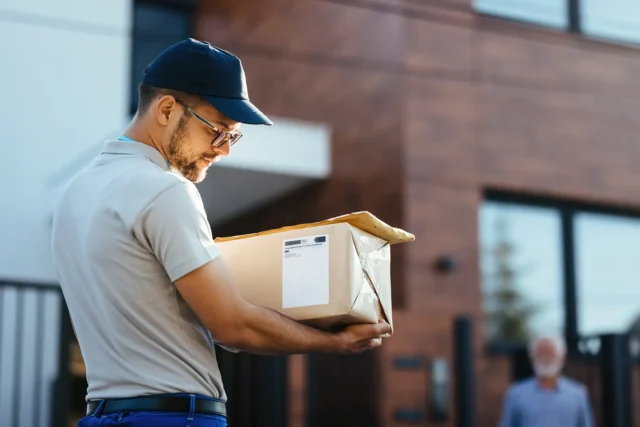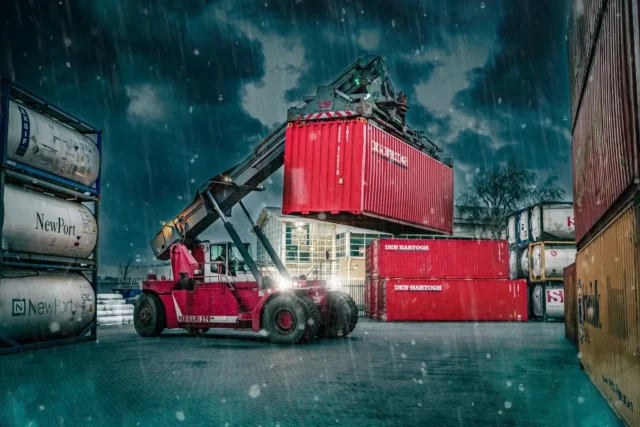
Securing large items for freight shipping requires having the right tools and equipment and the know-how for bulk shipments. Packaging freight shipment correctly ensures it arrives at its final destination in one piece. It also helps to prevent items from going missing during shipping and mitigates damages during loading and offloading.
Packaging equipment such as heavy-duty benchtop tape dispensers streamlines the packing process while applying taping to secure the items for shipping. It also means your freight shipment is more resilient against transportation hazards such as vibration and extreme weather conditions. Keep reading as we share tips for securing large shipments for safe shipping.
5 Tips on Securing Large Items for Freight Shipping

1. Be Aware of Potential Transporation Hazards
Freight shipments undergo a lot of handling, with some carriers loading and offloading cargo up to five times during one trip. The more freighted goods are handled, the more at risk they are for being damaged or going missing during transit. Exposure to both land and sea travel increases transportation hazards that could hamper the safe delivery of freight shipment.
Transportation hazards include:
- Different handling methods such as conveyors, cranes and lifts.
- Exposure to high levels of shock and vibration during handling and transportation.
- Extreme climate conditions.
- Changing altitude and compression.
Being aware of these dangers ensures you consider ways of packing larger items in a way that they can withstand these hazards during shipping.
2. Carriers Have Specific Packaging Requirements and Regulations

Every carrier has its own set of packaging requirements and regulations for different loads. Countries also have their own set of cargo regulations which can affect how you package goods for shipping. Before packaging larger items for freight shipping, check what the carrier’s terms and conditions are to ensure your goods are accepted for shipment.
Carriers’ packaging specifications include:
- Size and weight limits
- Perishables restrictions
- Non-acceptable products
- Proper labelling
- Packaging instructions for special or fragile items
You’ll need to declare the maximum value of your goods as well as give a full definition of the contents to your carrier.
3. Use the Right Packaging Materials to Secure Your Items

Protective cushioning, strong taping and proper wrapping of larger items will help secure them against shock and vibration during shipment. The following packaging materials can be used:
- Stretch wrapping
- Foam cushioning
- Strapping tape
- Load protectors
Blocking and bracing goods means securing them in one place to prevent them from shifting during transportation. Palletising and bundling large products with premium-quality heavy-duty strapping tape with high tensile strength secures and reinforces your goods for safe freighting.
4. Package Like a Pro!

Packaging freight shipment means doing the job professionally and ensuring your customers receive their goods undamaged. Functionality is more important than how the package looks, so avoid trying to impress your clients with colourful or impressive packing methods that don’t secure the goods!
The following pro tips will ensure you secure your customers’ goods for safe shipping:
- Palletise: Using pallets to load larger items keeps them in one place, allows for efficient handling and minimises the risk of damage during transit or loading.
- Stackable: Pack items so they can be stacked when loaded into containers with other goods. Most carriers require this to maximise on space and loading capacity.
- Use unbreakable strapping: Strong banding reduces the risk of your goods being broken during shipping. Unbreakable plastic taping or metal taping works well for bigger goods while a lock and clamp should be used for items that aren’t banded.
Consider temperature fluctuations that could change the integrity of some packaging materials as well as damp conditions or altitude. Internal packaging is equally important, especially for fragile goods and the box-in-box strategy is a secure solution many pros use. Fill empty spaces between the goods with foam or air-cushioned support to prevent damage during handling and transportation.
5. Use the Right Containers for Larger Items

To prevent your goods from being damaged, the right containers must be used to handle the weight and size of your freighted items. Boxes are your go-to for smaller items but larger goods can be secured better in the following container types:
- Freight boxes
- Shipping crates
- Drums and buckets
- Reels and spools
- Transit cases
Bundling goods onto shipping pallets is one of the safest ways to ship larger items, especially for international shipping. When labelling the containers, make sure the labels are visible and communicate everything your carrier needs to know about your freight shipment. This includes handling instructions and delivery addresses.
Last Words
Having the right documentation in place is essential for securing safe delivery of your freight shipment. Working with a reputable and professional shipping agent will ensure you get the correct paperwork for the safe delivery of your goods to their final destination.
Rely on your customers’ feedback to tell you if the goods have arrived safely, what problems (if any) were encountered and how you can improve your packaging services. This way, you can streamline your packaging process to meet all your customers’ expectations.













